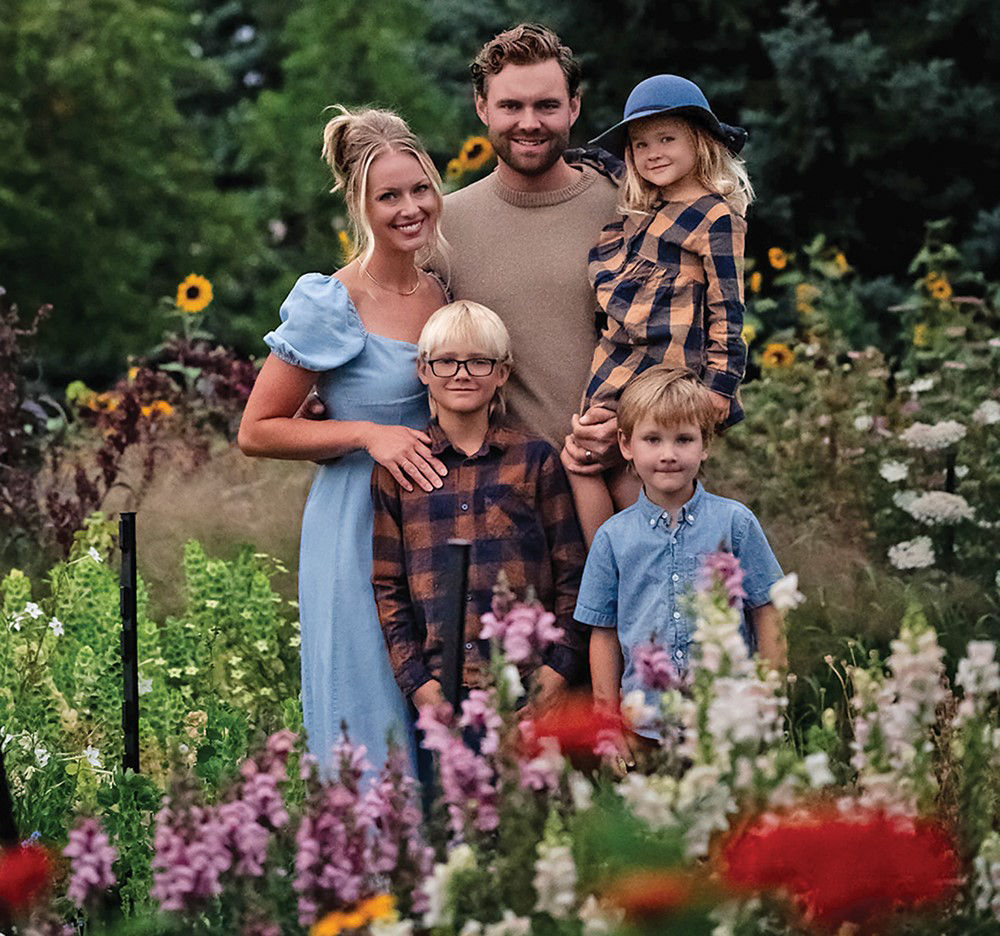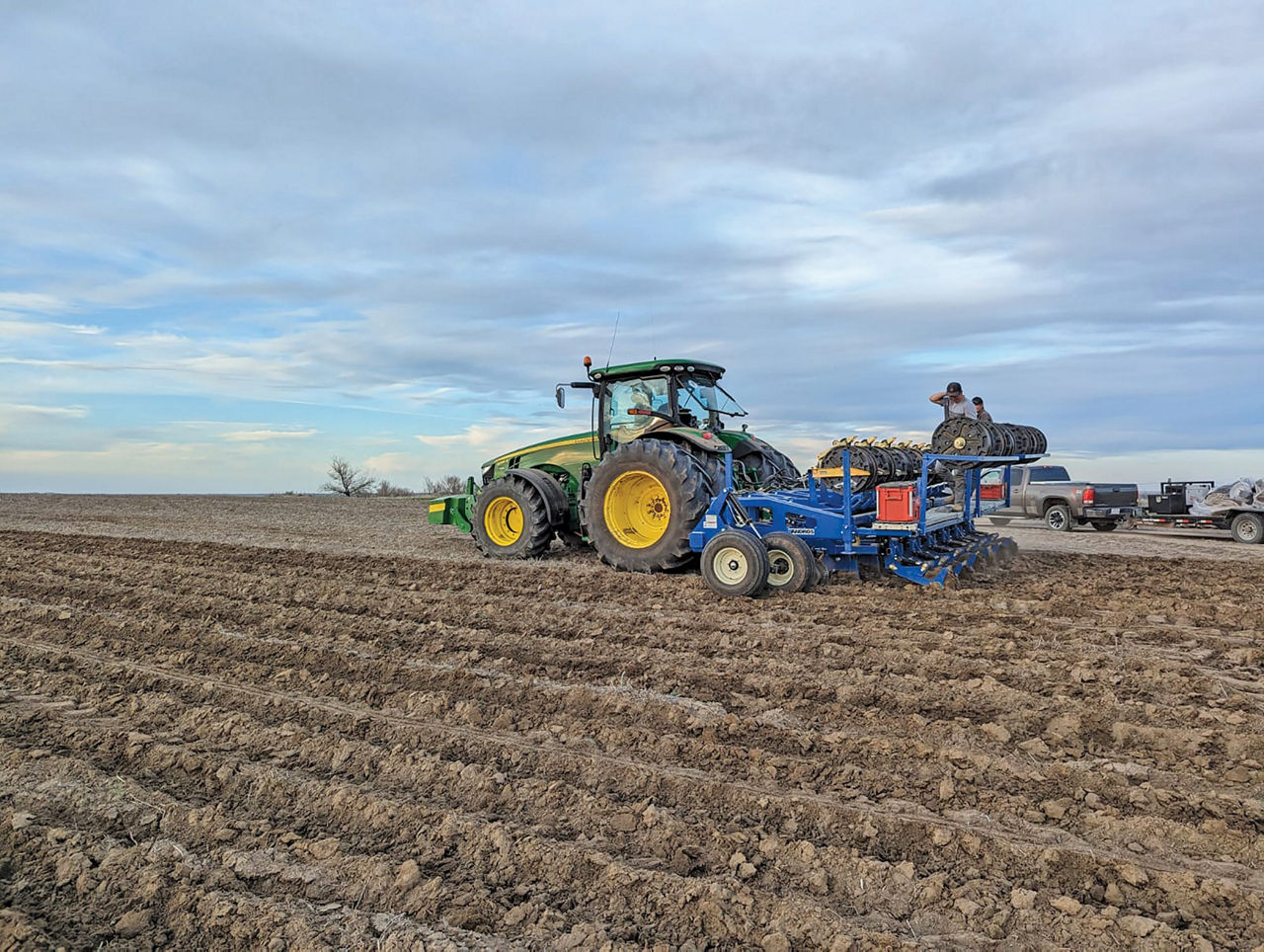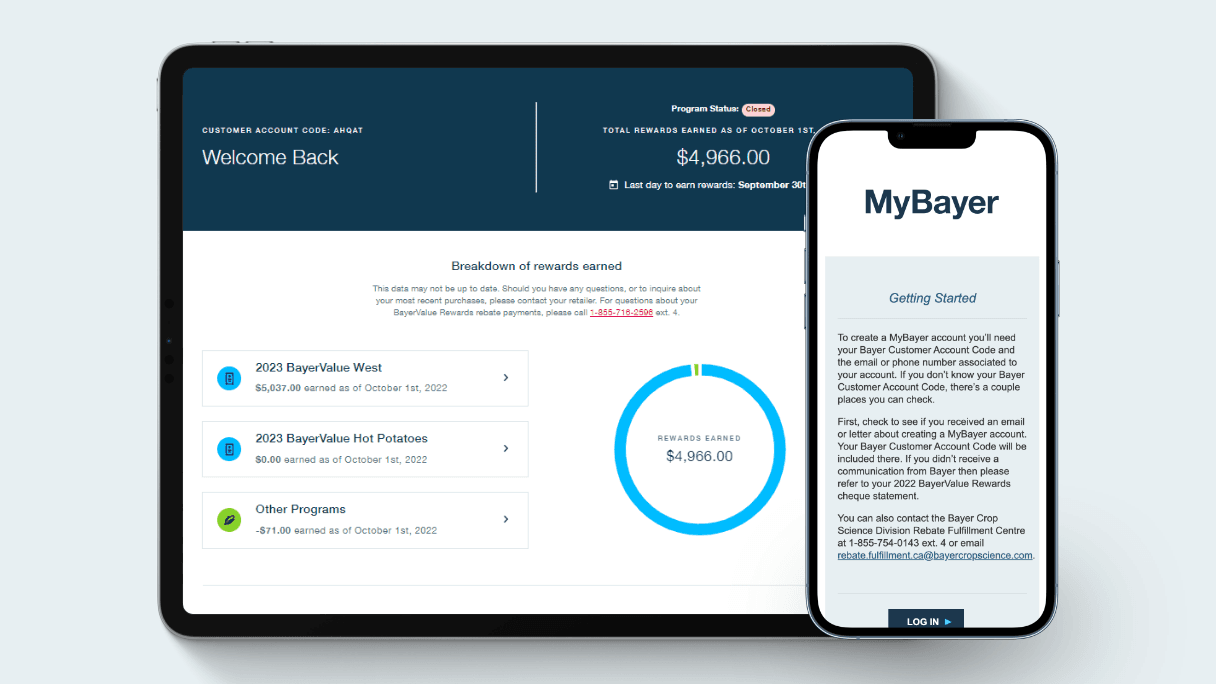Subsurface irrigation helps build a sustainable future for this Saskatchewan farm
June 13, 2025

By Trevor Bacque
To create and manage Canada’s largest subsurface irrigation farm may seem daunting, but Brady and Lindsay Funk are not the type to shy away from a challenge.
Guided by strong biblical values, the couple operates Braylin Acres. Located in Lucky Lake, SK, the farm is a true-to-life depiction of a favourite passage of scripture: “And a mist was going up from the land and was watering the whole face of the ground” — Genesis 2:6.
“If that’s the way God intended it, with plants, nature and things to thrive, why wouldn’t we emulate that?” says Brady.
The dream
Braylin Acres, purchased in 2021, is the second business the couple operates, the first being their portion of Lindsay’s family farm at Wymark, SK, about a 2 hour drive from Lucky Lake, which is co-run by her parents, Marv and Talita Hildebrand, and brother and sister-in-law Jordan and Alissa.
When the opportunity came to diversify the family’s farm and risk portfolio, it seemed like the right choice to buy the Lucky Lake farm. The land they acquired, six fields totalling just over 900 acres, came pre-gifted with a worn-out irrigation pivot.
“I had to start from scratch,” says Brady. “The plan was to develop every acre possible so that we could farm it as quickly as possible.”

The work
Immediately they set to work developing a private 24-inch wide, 4.8-kilometre irrigation line from the South Saskatchewan River to the new farm site. That took six months. But it was what happened after that, on a business trip to Israel in 2022, that really changed the trajectory of Braylin Acres.
Brady was introduced to Netafim technology, one of the world’s leading irrigation companies based in Israel. Through its innovative subsurface drip irrigation technology, the company helps farmers produce food in literal deserts around the Middle East. Brady loved what he saw and felt that subsurface drip irrigation — that is, water coming up from the ground rather than being sprinkled down onto it (like golf course and in-lawn irrigation systems) had potential at his new farm. Then the real work began.
Once the mainline was installed, he and his farm crew ran a plow through the fields to create troughs 11 inches deep and 36 inches apart, where they lay millions of feet of drip tape (irrigation lines on spools). They went back and forth, methodically, for weeks on end.
Brady admits they underestimated the true scope and cost of the work needed to excavate and build their own pipeline. “It was significantly more work than anticipated, which was totally fine,” he says. “If something is easy it’s probably not worth pursuing.”

The difference
To manage the entire system, Brady hired Gerber Ramirez, a full-time irrigation specialist to assist during the growing season. Ramirez manages everything from water and nitrogen rates to what time of day crops are watered.
“He’s been a huge help. I thought this was something I could manage myself, but without him there, it would be a different story,” says Brady.
The entire system is powered by a variable frequency drive controller on every pump, which is akin to a dimmer switch style light. These allow Brady to control how much water is being applied to the field, right down to the millilitre.
An added benefit of the subsurface set up is that it’s uniquely designed for fertigation. So, instead of front-loading his crops with nitrogen, Brady effectively micro-doses his plants with fertilizer throughout the growing season and at much more precise rates. “It effectively goes to the root system of the plant,” he explains. “We are spoon-feeding that to the plants on days they need (it). It’s a very tailored approach to plant health. Those are some areas where we think that we are significantly farther ahead than a traditional pivot.”
The entire system is monitored remotely. Soil moisture probes are littered throughout the fields, which have anywhere from 10 to 15 zones, all connected through a cell signal via a radio frequency, that feeds into a Galcon controller and ultimately linked to a cloud-based server. This affords Brady and others the ability to see what’s happening right on their phones from anywhere in the world. “The tech is highly advanced. If there’s an issue, I’m alerted immediately,” he says.
Due to the extreme precision of the operation, Brady conservatively estimates that he saves 30 per cent on his water bill versus conventional pivot irrigation. As well, because subsurface irrigation delivers water from the ground up, not top down like a traditional pivot, Brady says the need for fungicide is dramatically lower. “We have less fungicide applications because we are not making the leaves wet, so we spray for disease significantly less,” he says. “Less passes, less chem applied, it all adds up.”
Conversely, the Funks spend about twice as much on fertilizer and other nutrients compared to traditional operations — because they can be so precise with nutrient delivery, and because yield potential is so high, input rises accordingly.
Even though they are still in the buyback period, the results speak for themselves. Last year’s durum crop produced a yield 500 per cent greater than their dryland neighbours 100 metres away.
“When you’re able to harvest the fruits of your labour and it’s a wildly successful crop, to me that has been way more exciting than dryland farming,” says Brady.
The here and now
The farm site has been established such that if neighbouring land comes up for sale, the Funks could purchase it and incorporate subsurface drip irrigation.
This year, all but one acre is dedicated to CDC Blackstrap black beans, similar to pintos. The beans love water, and Brady will adhere to the common wisdom of, “no mould, no gold,” in a nod to pushing them right to the cusp of disease to maximize yield. The other single acre is dedicated to fruit and vegetables, including cucumbers, cantaloupe, green beans and sweet corn, which the Funks are hopeful will work, considering their Lucky Lake location has similar heat units to southern Alberta.
“We might as well give it a try,” says Brady. “If it doesn't work out, we lost one acre and God’s going to provide for us regardless, it just may look different. For me, it’s been an incredible learning curve and a labour of love. It’s been stressful, exciting, a roller coaster of emotions.”
For Lindsay, Braylin Acres represents hope for the next generation and the ability to live the way God intended. “This is a way that we could see a future for our children to continue farming because small family farms are important,” she says. While working as a registered nurse, she also operates Two Sisters Flower Co. with sister-in-law Alissa at the Wymark farm. “It’s not about just making profits, but we do get excited about high yields because that means we are able to bless other people more. That is a big driver behind why we do what we do and brings us immense joy, as well.”
